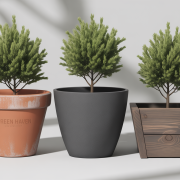The terms, “going green” and “sustainability” are becoming more common in our everyday lives. When property owners decide to make their properties eco-friendlier, they often invest in skylights, eco-friendly appliances and opt for recycling. If you’ve started the “going green” process, you might have skipped over one crucial point – green plumbing.
How do you convert your residential or commercial property to green plumbing? It’s as simple as finding a vendor that offers accredited green commercial plumbing Melbourne and other Australian cities are relying on to go green!
Turning Your Residential & Commercial Plumbing Green
Sustainable plumbing can take on many different forms. Additionally, it’s a process that you can start systematically as every small change can make a huge difference. What exactly is green plumbing? Let’s delve into the details.
What is Green Plumbing?
Green plumbing is your way of doing your bit for your environment. The primary function of going green is changing plumbing features to those that can ultimately save water. By using water more effectively, your home or commercial building will consume less water.
What Are Easy Ways You Can Incorporate Green Plumbing into Your Property?
Consulting a residential or commercial plumber that’s accredited to do green plumbing is most likely the best first step you can take. These experts will easily be able to advise you on the best plumbing replacements that can suit your property.
Some of the more common green upgrades that they might suggest include:
- Installing dual-flush toilets: Conventional toilets use an average of 12 litres of water every time they’re flushed. A dual-flush toilet amazingly only uses 4.5 litres for a full flush. On average you’re looking at a saving of 7.5 litres per flush. Imagine the water that can be saved by installing these in your commercial building.
- Switch to a water-saving showerhead: This can be done in commercial or industrial buildings where employees take showers. Again, a great water-saving feature in both a residential and commercial setting! On average a water-saving showerhead only uses an average of 9 litres per minute in comparison to the 12 to 22 litres of a regular showerhead!
- Replace taps with low flow taps: Properties that have public bathrooms or commercial kitchens will benefit from taps with a low flow feature. Regular taps use an average of 15 litres per minute whereas a low flow tap uses only 3 litres per minute.
- Install rainwater collection tanks: In areas that experience water shortages, rainwater tanks are a huge asset. Harvesting rainwater allows property owners to use rainwater when there’s little rain. It’s also a great way to reduce your dependency on water mains. If you’re not really in favour of unsightly tanks in your yard, the good news is, some types of tanks can be installed underground. Speak to your commercial plumber about the options available for your space.
- Reuse grey water: A plumber can easily install pipes from your drains to the garden or lawn. That means bathwater and water from the washing machine or dishwasher can be used in the garden rather than being flushed down the drain. Aside from the pipes, the plumber could also install a grey water tank that uses a filtration system to keep water useable for 24 hours.
How Affordable is Green Plumbing?
Deciding to modify your existing plumbing to more sustainable green plumbing features will most definitely cost you money in the short term. Looking at the bigger picture, your overall costs will be considerably less over the long term, all thanks to financial savings related to utility costs.
Additional Tips from Green Plumbers
Until you get all your plumbing modified, there are a few small changes you can do to save water, such as :
- Take shorter showers rather than long hot baths.
- Do a water plumbing check on all your taps and pipes and fix any leaks.
- Turn off the tap when you’re brushing your teeth.
- Only use the dishwasher when it’s full.
- Wait to have a fuller load of washing before you use the washer.
- Consider which water can be recycled and used in the garden. For instance, rinse vegetables and fruits in a bowl rather than the sink. The water can then be poured over pot plants or on the lawn rather than just running down the drain. On that note, don’t rinse food under a running tap.
- Teach everyone in the household to be mindful of water usage.
Final Thought
It might not be financially feasible to upgrade or modify all your plumbing features at once. With this in mind, it’s worth getting a quote from your accredited green plumber and then deciding from there which options to start with. Adding green plumbing to your home will help you do your bit for the environment as well as save you a ton of money in the long run!













[…] mobile hot water curing systems allow you to offer your CIPP plumbing services to your clients without worrying about the season or how long the process will take. In […]